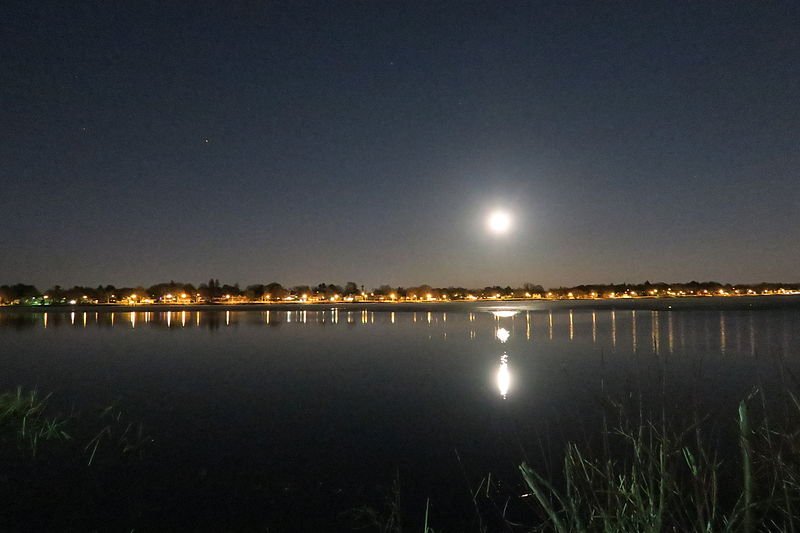
Welcome to Wakefield
Wakefield has preserved much of its historic New England charm and is recognized for its strong community involvement, quality school system, thriving businesses, public library, and beautiful Lake Quannapowitt. Walkers and joggers pass the historic Hartshorne House as they circle Lake Quannapowitt's shores and boaters set sail from the nation's oldest inland yacht club.
Key Details
Settled - 1638
Incorporated - 1812
County - Middlesex
Zip code - 01880
Area
Total - 7.9 sq mi (20.5 km2)
Land - 7.5 sq mi (19.3 km2)
Water - 0.4 sq mi (1.1 km2)
Population (2010)
Total - 24,426
Density - 3,091/sq mi
Resources
-
Transportation
Route 129 runs through Wakefield as its Main Street. I-95/Route 128 skirt the northwestern border of Wakefield as one road known as the "Yankee Division Highway".
Geography
Wakefield has two lakes, Crystal Lake and Lake Quannapowitt. Crystal Lake is used as a reservoir for some of the town's drinking water. Lake Quannapowitt is used for a wide variety of recreational activities, including boating, windsurfing and fishing, and is the primary source of the Saugus River.
In 1847, Lake Quannapowitt was named for the Native American James Quannapowitt, one of the signers of the old Indian Deed of 1686. The earliest settlers referred to the lake simply as the "Greate Pond" or "Reading Pond."
Lake Quannapowitt is also home to the oldest inland yacht club in the United States, Quannapowitt Yacht Club, which was founded in 1886.
Long regarded as "Wakefield's greatest natural resource," Lake Quannapowitt covers an area of 247 acres (1.00 km2). Its outlet is the Saugus River to the Atlantic Ocean. Wakefield Common sits to the south of the lake, and is the site of many recreational activities and events throughout the year. In 1991, a group of local citizens formed "The Friends of Lake Quannapowitt" to advocate for the lake and to educate the public about this natural resource. The group has also raised money for projects that benefit the lake and the surrounding areas.
History
Wakefield was first settled in 1638 and was originally known as Lynn Village. It officially separated from Lynn and incorporated as Reading in 1644 when the first church (First Parish Congregational Church) and the first mill were established. This first corn mill was built on the Mill River on Water Street, and later small saw mills were built on the Mill River and the Saugus River.
The old parish church became known as the Old or South Parish when in 1713 the North Parish was established. This North Parish later became the town of North Reading. In 1769 the West Parish was established. In 1812 the Old or South Parish of Reading separated from Reading and was officially incorporated as South Reading. At the time it was spelled South Redding, not South Reading.
The railroad was chartered and built in 1844 between Wilmington and Boston. This later became the main line of the Boston and Maine Railroad. The Boston and Maine Foundry was built in 1854 and was later reincorporated as the Smith and Anthony Stove Company. The Boston Ice Company cut and shipped ice from Lake Quannapowitt starting in 1851.
The Rattan Works (which made wicker furniture) was established in 1856 by Cyrus Wakefield. This later grew into the Wakefield Rattan Company and at one time had a thousand employees. In 1868 Cyrus Wakefield donated land and money for a new town hall, and in thanks the town voted to change its name from South Reading to Wakefield. The town hall, currently named for William J. Lee, is located at 1 Lafayette Street.
In 1856 the South Reading Public Library was established, which later became the Beebe Town Library. In 1923, the Lucius Beebe Memorial Library was built and established by Junius Beebe, the son of Lucius Beebe (1810–1884).
The first weekly newspaper in Wakefield was established in 1858.
One of the oldest and largest manufacturers of flying model airplane toys in the world, Paul K. Guillow, Inc. is located in Wakefield. The company is particularly notable for its extensive line of balsa wood model airplane kits.
Route 128 was built along the north edge of the town by 1958, and the American Mutual Insurance Company built its headquarters between Lake Quannapowitt and Route 128. American Mutual had over 1000 employees, most of them commuting to work via Route 128. By the late 1980s American Mutual was in liquidation due to the Woburn W. R. Grace litigation. The headquarters building was sold to the Beal Company and was home to Boston Technology Inc. which invented and manufactured corporate voice mail systems that operated on computer systems. Boston Technology merged in 1997 with Comverse Technology, a digital telecommunications equipment manufacturer, which later bought the building; Wakefield became headquarters of its eventual spinoff, Comverse.
The northeastern part of Wakefield was home to an amusement park, Pleasure Island, billed as "The Disneyland of the Northeast," but the park closed in 1969 after only ten years of operation due to unseasonably cold weather that brought diminishing returns among tourists. In April 1971, a fire burned down much of the amusement park. The area now consists of several office buildings and is called "Edgewater Park".
The bicentennial of the incorporation of Wakefield took place in 2012, whereas 2018 is the sesquicentennial of the 1868 town name change from “South Reading” to “Wakefield.”
-
Lake Quannapowitt is a popular recreation area for walkers, joggers, bikers, and rollerbladers.
Lucius Beebe Memorial Library.
The town common is the central park of Wakefield, on the southern edge of Lake Quannapowitt. Events such as summer concerts and the Fourth of July festivities take place there.
Breakheart Reservation, located in Saugus, is also accessible from Wakefield.
-
Wakefield is home to two high schools: one public school (Wakefield High School), and one regional vocational school (Northeast Vocational). Wakefield contains one middle school, Galvin Middle School, and five elementary schools, Greenwood, Walton, Woodville, Dolbeare, and Doyle.
The Little Red School House is a former one-room school house building that was last used by kindergarten students on the West Side until the 1980s. It has been preserved and now houses the Wakefield Historical Society.

Check out other communities we service
Boston Neighborhoods
Back Bay, South End, Downtown, Fenway, South Boston, Seaport, East Boston, Allston, Brighton, Jamaica Plain, West Roxbury, Roslindale
West of Boston (Metrowest)
Brookline, Newton, Weston, Wellesley, Sudbury, Wayland, Lincoln, Waltham, Watertown, Dedham, Needham, Sudbury, Framingham, Natick, Westborough, Southborough, Marlborough, Hudson, Ashland, Dover
North of Boston
Cambridge, Somerville, Winchester, Medford, Malden, Melrose, Stoneham, Woburn, Saugus, Arlington, Lexington, Belmont, Burlington, Wilmington
North Shore
Swampscott, Marblehead, Salem, Peabody, Lynnfield, Wakefield, Reading, North Reading, Middleton, Danvers, Beverly, Manchester by the Sea, Gloucester, Rockport, Essex, Ipswich, Hamilton, Wenham, Topsfield, Boxford, North Andover, Andover
*content on this page is a mixture of original and pulled from multiple locations including Wikepedia


